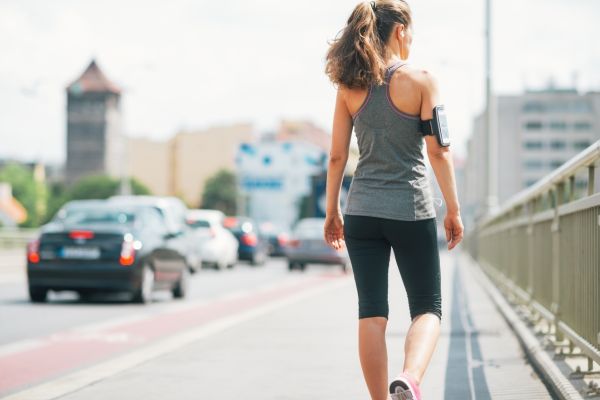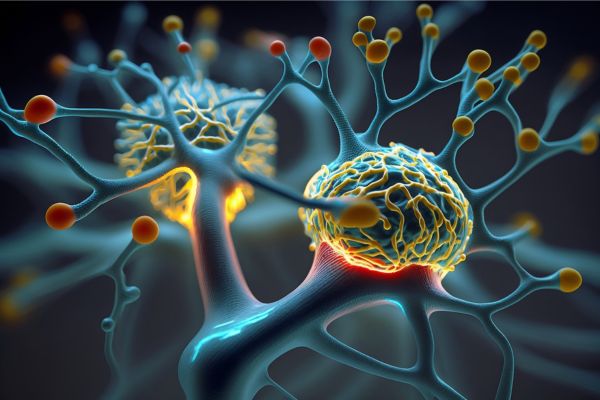Stress and trauma can linger in the mind and body, making it difficult to move forward. But what if something as simple as walking could help process these emotional burdens? Research shows that bilateral stimulation—the rhythmic, alternating movement of the body—can aid in reducing stress and even processing trauma. Walking, one of the most accessible forms of bilateral stimulation, engages the brain in a way that promotes healing and emotional regulation.

What is Bilateral Stimulation?
Bilateral stimulation involves alternating left-right movement or sensory input, engaging both hemispheres of the brain. Common forms include walking, tapping, eye movement, and rhythmic sounds. This mechanism plays a crucial role in EMDR therapy, where controlled eye movements or other bilateral actions help reprocess traumatic memories and reduce their emotional charge.
The Science Behind Bilateral Stimulation and the Brain
Bilateral stimulation works by engaging both sides of the brain, facilitating better communication between neural networks responsible for memory, emotions, and stress regulation. This natural process not only enhances cognitive and emotional regulation but also supports overall mental resilience. The impact of bilateral stimulation can be seen in various ways, particularly through rhythmic activities like walking. Here are some key ways bilateral simulation helps in processing stress and trauma:
Activates Both Hemispheres of the Brain
Bilateral stimulation, such as walking, involves the repetitive movement of the left and right sides of the body. This rhythmic pattern helps activate both hemispheres of the brain, enhancing communication between them. Studies have shown that this dual activation can facilitate cognitive processing, much like Eye Movement Desensitization and Reprocessing (EMDR) therapy. According to a 2021 study published in Frontiers in Psychology, bilateral stimulation helps reduce emotional distress by integrating traumatic memories more effectively, making them feel less overwhelming over time.
Reduces Stress Hormones
Walking is known to lower cortisol, the hormone associated with stress. A study from the Journal of Affective Disorders (2022) found that individuals who engaged in daily walking experienced a significant reduction in cortisol levels, leading to improved mood and lower anxiety. The rhythmic nature of walking signals safety to the brain, helping the nervous system shift from a fight-or-flight response to a state of calm and regulation.

Enhances Emotional Processing
When people experience stress or trauma, their brains may struggle to fully process these emotions, leaving them trapped in cycles of anxiety or distress. Bilateral stimulation, particularly through walking, has been linked to enhanced emotional processing. Research conducted by Harvard Medical School (2023) suggests that activities involving rhythmic, bilateral movement can help reprocess distressing memories, making them less emotionally charged. This is particularly beneficial for individuals dealing with post-traumatic stress disorder (PTSD) or chronic anxiety.
Encourages Mindfulness and Grounding
Walking outdoors or in a peaceful environment encourages mindfulness, which plays a crucial role in emotional regulation. By focusing on the rhythm of each step, the sensation of movement, and the surrounding environment, individuals can become more present in the moment. According to a study in Mindfulness (2020), engaging in mindful walking significantly reduced symptoms of stress and depression by promoting a sense of grounding and mental clarity.
Improves Sleep and Relaxation
Chronic stress and trauma often disrupt sleep patterns, leading to insomnia or restless nights. Bilateral stimulation through walking can help regulate sleep by calming the nervous system and balancing neurotransmitter levels. A 2022 study in the Journal of Sleep Research found that individuals who walked for at least 30 minutes a day experienced deeper, more restorative sleep. This improvement in sleep quality further aids in emotional resilience and mental health recovery.
Boosts Neuroplasticity and Cognitive Flexibility
Neuroplasticity, the brain’s ability to adapt and reorganize itself, plays a key role in recovering from stress and trauma. Bilateral stimulation fosters neuroplasticity by creating new neural pathways that support emotional resilience. A report from the National Institute of Mental Health (2023) highlighted that regular bilateral movement, such as walking, can enhance cognitive flexibility, helping individuals reframe negative thoughts and develop healthier coping mechanisms.

Why Walking is a Natural Form of Bilateral Stimulation
Walking is one of the most accessible forms of bilateral stimulation. The rhythmic left-right movement of each step activates brain function and enhances communication between cognitive and emotional centers. This movement promotes emotional regulation by increasing serotonin and dopamine levels, which are essential for mood stabilization. Additionally, walking helps integrate traumatic memories in a non-threatening way, allowing the brain to reprocess past experiences more effectively.
Other Types of Bilateral Stimulation for Stress Relief
Bilateral Tapping
Self-administered techniques, such as tapping on shoulders, knees, or hands, can have a calming effect. This method is widely used in EMDR therapy to reduce distressing emotions and provide a sense of grounding.
Listening to Alternating Sounds
Binaural beats and bilateral audio stimulation can promote relaxation and emotional processing. Research suggests that alternating auditory inputs help synchronize brain activity, leading to improved focus and reduced stress.
Eye Movement Exercises
Intentional eye movements, as used in EMDR therapy, can mimic the brain’s natural processing mechanism during REM sleep. These movements help desensitize traumatic memories and reduce anxiety.
Bilateral Drawing and Writing
Using both hands alternately for drawing or writing engages different neural pathways, facilitating emotional expression and trauma recovery. This technique is especially beneficial in art therapy.
Bilateral Simulation for Stress
The simple act of walking offers profound benefits for processing stress and trauma. By engaging both hemispheres of the brain, reducing stress hormones, enhancing emotional processing, and promoting mindfulness, walking serves as a powerful tool for mental well-being. Whether incorporated into therapy or used as a daily habit, bilateral stimulation through movement can help individuals navigate life’s challenges with greater ease and resilience.




